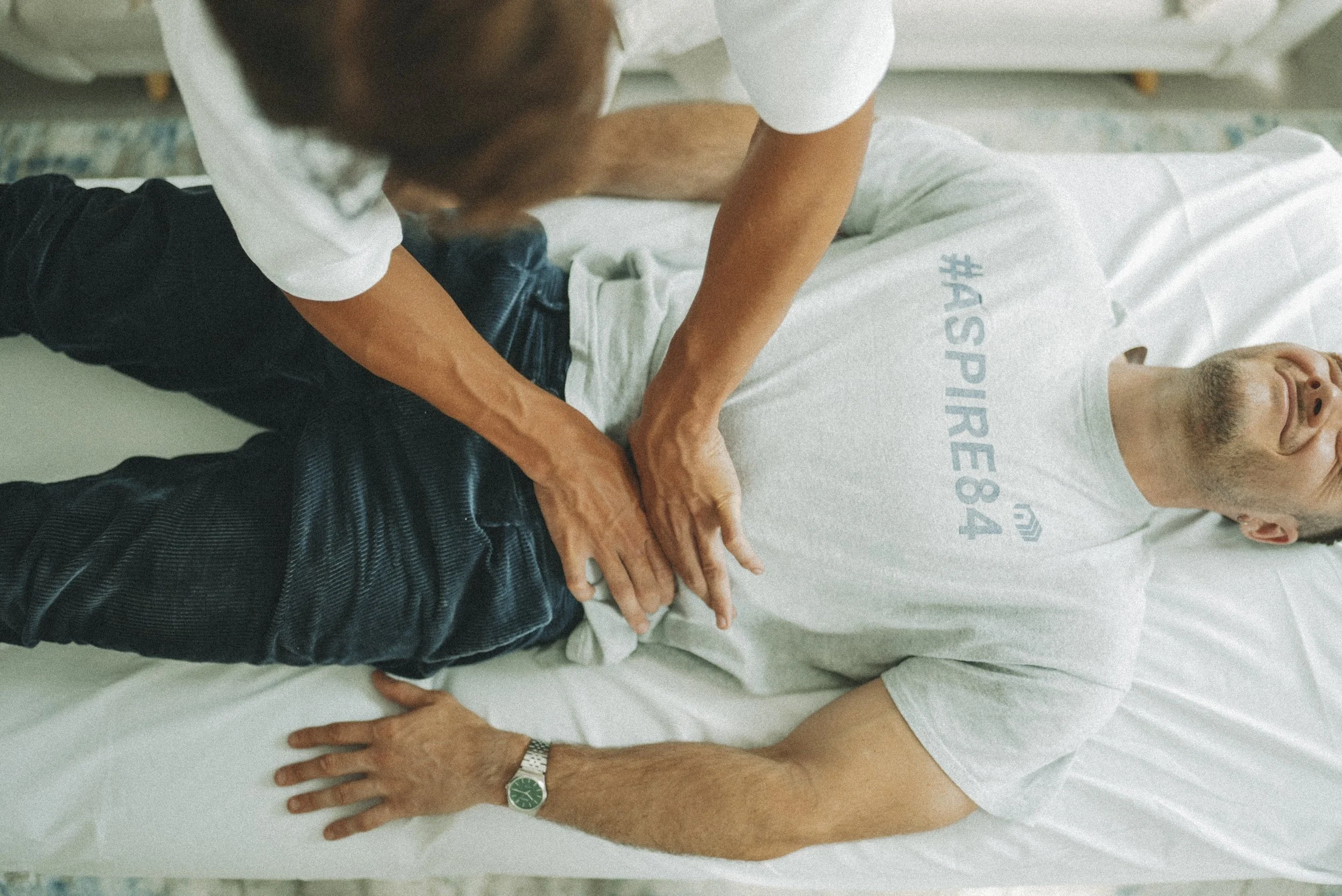The Importance of Solid Breathing Mechanics in Breathwork.
The world of breathwork is booming, driven by transformative practices that promise powerful "altered states of consciousness." These techniques are genuinely impactful, and clinical research has proven their ability to significantly reduce chronic stress and anxiety symptoms.
However, while the spotlight shines on the intensity of hyperventilation cycles and deep meditative holds, we must address the fundamental, and often aggressively overlooked, foundation: functional breathing mechanics in everyday life.
This necessary, disciplined work- the mastery of how you breathe when you aren't trying - requires patience and consistency. It’s not the quick outcome of a dazzling, episodic technique. As someone who has spent hundreds of hours in self-practice, undergone multiple trainings, and worked with a number of clients in 1:1 and group settings, I can affirm that achieving this foundational mastery is a lifelong journey that I am not near the peak yet.
The Foundational Approach: Building Function for Lasting Change
Source: Will Twigden
We cannot expect to master advanced practices, such as maintaining a slow, controlled six breaths per minute, if our primary respiratory muscles - the diaphragm, intercostals, and core stabilisers- are not functioning optimally at rest. The effect will be limited, and the potential for true, sustained change will be undermined.
The critical distinction is this: While a temporary altered state can be induced with restricted, upper-chest breathing, this intense, episodic experience can facilitate emotional processing that indirectly expands your Window of Tolerance. However, without addressing the foundational mechanics, this approach is less effective for improving the sustained physiological regulation of your nervous system - the quiet, functional work that keeps you grounded within that expanded window every day.
To build a foundation that supports true, sustained physiological regulation, a focus on functional breathing mechanics is essential. This foundation is defined by three dynamic characteristics:
Functional Diaphragm movement at rest
The diaphragm must be the primary muscle of respiration. At rest, efficient breathing involves the diaphragm contracting and flattening to maximise lung volume, causing the abdomen to gently expand with minimal, almost imperceptible, activation of the upper chest or neck muscles. The goal is simple: keep the high-demand accessory muscles in reserve for when life truly requires greater activation or exertion.
This efficient movement has a profound impact on your state:
Vagus Nerve Massage: The Vagus nerve, the primary branch of the parasympathetic (rest and digest) nervous system, passes straight through the diaphragm. Full diaphragmatic excursion acts like a continuous massage, sending a robust signal to the brain that the body is safe, actively lowering your stress response.
Organ Function: This rhythmic movement also acts as a pump, gently massaging your organs (intestines, stomach, liver, etc.), which aids in lymphatic drainage and improves the function of the digestive and detoxification systems.
2. The FULL Rib Glide
Effective functional breathing requires the capacity to utilise the full respiratory system. This involves the diaphragm working synergistically with the intercostal muscles to achieve circumferential expansion of the ribcage - front, sides, and back. This 360-degree capacity ensures that:
Optimal Lung Volume: When high demand necessitates larger air intake (e.g., during exercise or crisis), the chest can fully flare to maximise air volume, improving gas exchange efficiency.
Core Stabilisation: The movement creates optimal Intra-Abdominal Pressure (IAP), stabilising the spine and reinforcing your entire core structure, preventing chronic back and neck pain.
3. Dynamic Breathing (Nasal vs. Oral)
STATE: Rest & Recovery (Baseline)
Gateway: The Nose
Physiological Impact: The nose is the preferred gateway for baseline breathing due to its ability to filter, warm, and humidify air. Crucially, it delivers Nitric Oxide (NO) from the sinuses. NO is a potent vasodilator that increases oxygen absorption and distribution, supporting a calm, parasympathetic state
STATE: Activation & Demand (Peak)
Gateway: The Mouth
Physiological Impact: Oral breathing serves a crucial function as the necessary high-volume mechanism during speech, intense physical exertion, or when rapidly clearing large amounts of carbon dioxide
The foundation is established when you can sustain nasal breathing for rest and easily switch to oral breathing for peak performance, then effortlessly revert to nasal breathing for recovery.
The Value of Hands-On Guidance
Source: Will Twigden
While the principles of nasal breathing and dynamic adaptation can be practiced independently, from my experience and applying logic, resetting foundational breathing mechanics is often difficult to achieve through purely self-instruction or online.
Chronic stress and habitual tension create physical, often subconscious, restrictions in the body. For those struggling with deep-seated mechanical issues, attuned touch and skilled bodywork can be a powerful catalyst. Until a practitioner can help free up structural elements - like the diaphragm itself, the intercostals, and the deeply connected psoas muscle - compromised breathing mechanics may continue to contribute to systemic anxiety.
To move efficiently toward true, sustained physiological regulation, the body frequently benefits from hands-on assistance to release these physical restrictions. When mechanics are restored, the pursuit of better well-being - whether through 1:1 guidance or powerful group settings - becomes not just easier, but profoundly more natural and effective.
Source: Will Twigden
The future of breathwork must integrate the profound benefits of altered states with a rigorous focus on the physical engine that influences your nervous system approximately 26,000 times per day. Prioritising the health of your breath engine is prioritising your daily, moment-to-moment well-being.
Have you felt your diaphragm drop downwards; have you felt your ribs expand?
Whether you choose to start with self-practice, group work, or a targeted one-to-one assessment, the journey toward better breathing begins now.
Thank you for reading,
Will Twigden.




